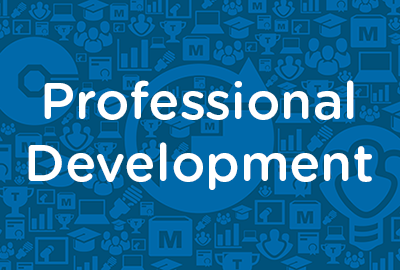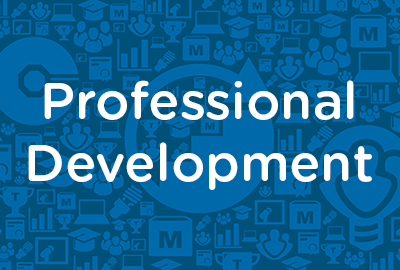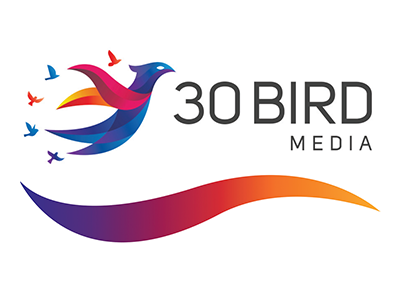 |
Creativity and Innovation: Promoting Team Creativity (Instructor Guide) |
1.34 |
The purpose of a team is to bring together people with diverse personalities, knowledge, education, and experience. This combined diversity encourages creativity and productivity to accomplish a common goal. Teams might consist of people from a single department or several departments.
Teams can generate new ideas, expand on or improve current ideas, make decisions, and solve problems. Teams can also be assigned to a specific task or be made responsible for a broader area, such as responding to changing customer expectations. When team members recognize their roles in a team, and the manager performs his responsibilities, creativity has a better chance of flourishing.
In this course you will learn to: identify characteristics of creative teams, and manage these teams effectively, conduct creative team sessions, and conduct brainstorming sessions, and use creativity to solve problems.
This Instructor's Edition of this course includes notes and suggestions to assist you in presenting the material, whether in an in-person classroom setting, or as an instructor-led online or distance-learning course. It also provides you with the answers to questions found in mid-lesson activities, as well as in the quiz that concludes the course. |
 |
Coaching: Communication |
1.00 |
Language is an important coaching tool. The use of suitable words during coaching will help you create relationships, repair employee confidence, and establish plans for employee success. As a coach, you must select words that directly influence your employees’ attitude, behavior, and performance. The use of appropriate language during your coaching sessions will help you convey your messages in a clear and encouraging manner.
In this course you will learn to: clearly express your message by using appropriate language, identify and use nonverbal methods of communication, and receive the desired information by asking effective questions. |
 |
Interviewing Skills: Evaluating and Deciding |
0.67 |
When determining which candidate will be most successful in the job and your organization, you must complete two important steps. First, you should assess each candidate’s experience and past performance, and compare them to the job’s success factors. Then, you should compare candidates with one another to identify the one with the best fit for the job and culture.
In this course you will learn to: identify the types of bias and the steps to evaluate a candidate, and identify several criteria for ranking candidates. |
 |
Effective Presentations: Building Presentations (Instructor Guide) |
1.17 |
Organization is extremely important in a presentation because the audience cannot follow your work if they become confused. Therefore, it is the responsibility of the presenter to help the audience understand the presentation from beginning to end.
This Instructor's Edition of this course includes notes and suggestions to assist you in presenting the material, whether in an in-person classroom setting, or as an instructor-led online or distance-learning course. It also provides you with the answers to questions found in mid-lesson activities, as well as in the quiz that concludes the course. |
 |
GED: Social Studies - Unit 3: Economics |
1.00 |
Welcome to Unit 3: Economics. Economics accounts for about 15% of the questions you'll see on the test. In this unit, we'll cover the basics of both micro and macroeconomics. We'll work with graphs, and we'll explore consumer economics. |
 |
GED: Social Studies - Unit 4: Geography and the World |
1.00 |
Welcome to Unit 4 - Geography and the World! World Geography accounts for about 15% of the questions you'll see on the test. There are five basic themes in geography - location, place, human-environment interaction, movement, and region. This Unit, we'll cover the basics of each one. We'll also learn about some of the maps geographers use to study the world. |
 |
Sales Skills: Advanced: Developing a Winning Strategy |
0.50 |
This course will focus on examining consulting strategies and developing solutions for clients. |
 |
Customer Relationship Management: CRM Implementation |
0.50 |
This course will cover how to redesign your work processes, and identify reasons to implement CRM in stages. You will also learn how to implement CRM. |
 |
Implicit Bias (Corrections) |
1.00 |
In this course, you’ll learn about implicit biases that happen despite our best intentions. After completing this course, you will be able to:
Define implicit bias.
Describe how implicit bias can impact the workplace or an organization.
Identify the steps you can take to further educate yourself about this topic. |
 |
Organizational Communication: Power, Politics, and Diversity (Instructor Guide) |
0.75 |
Power is the ability to influence someone to do something that they would not do without encouragement. Various types of power and power strategies depend on the level of influence. The existence of different levels of power in an organization gives rise to organizational politics.
Politics can arise between individuals who differ from each another. To avoid confrontation arising from differences, it is important for people to recognize the benefits of diversity within their organization.
In this course you will learn to: identify different levels and types of power, identify strategies to manage diversity and to communicate in different cultures, and identify the steps and guidelines for empowerment.
This Instructor's Edition of this course includes notes and suggestions to assist you in presenting the material, whether in an in-person classroom setting, or as an instructor-led online or distance-learning course. It also provides you with the answers to questions found in mid-lesson activities, as well as in the quiz that concludes the course. |
 |
GED: Reasoning Through Language Arts - Unit 7: The Extended Response |
1.00 |
Welcome to Unit 7: The Extended Response. The last part of the RLA section is the Extended Response, or essay. Here's how it works. You'll be given something to read - a source text or texts - and asked to write an essay in response to a prompt related to the reading. In this unit, we'll learn about two types of essays and take a look at an example of each one. |
 |
GED: Science - Unit 1: Science Practices |
1.00 |
Welcome to Unit 1: Science Practices. Science practices describe the ways we collect, process, and analyze information. Each question on the science test will incorporate science practice within the content area being tested. In this unit, we'll explore some of those science practices. We'll define scientific method, describe variables, and learn about sampling techniques. We'll also explore some of the ways scientists represent and analyze the data they collect. |
 |
Cultural Diversity in School Settings |
1.00 |
This course contains definitions of diversity, equity, and inclusion (DEI) and the role DEI plays in the school setting. Embracing diversity, equity, and inclusion benefits everyone within a K-12 institution: faculty, staff, students, and families.
Learners will reflect on the different elements of their own identity and how that impacts their perception of others. This course will also discuss the role of bias in the school setting. |
 |
Foundational Literacy Strategies for Paraprofessionals |
1.00 |
This course covers foundational literacy strategies for paraprofessionals. It will walk you through different strategies you can use throughout the reading process. The content of this course is divided into three parts: strategies you can use before reading, during reading, and after reading. It is just one out of many paraprofessional courses we offer. This course will help you develop new knowledge about students and will help you better understand your role as a paraprofessional. |
 |
Human Relations Skill Development |
2.00 |
Being able to communicate effectively is an essential human relations skill for school-age care professionals. To be a good communicator, school-age professionals need to understand the components of communication and how the communication process works. They need to identify barriers to clear communication and develop strategies for minimizing or eliminating barriers to communication. School-age care professionals also need to work cooperatively with other team members to solve problems and conflicts. This requires an understanding of how teams work and the characteristics of effective teams. Assessing the current status of personal human relations skills helps each professional identify priorities for making improvements to these skills. |
 |
Cross-Cultural Business Communication: Communicating Across Cultures (Instructor Guide) |
1.00 |
When communicating across cultures, you could come across a number of barriers. In addition to language barriers, there might be more subtle obstacles, such as cultural biases and conflicting communication styles. Building relationships with people of other cultures will provide you with the incentive to work through those barriers and achieve effective communication.
In this course you will learn to: establish rapport and build trust, and listen well and provide positive and constructive feedback.
This Instructor's Edition of this course includes notes and suggestions to assist you in presenting the material, whether in an in-person classroom setting, or as an instructor-led online or distance-learning course. It also provides you with the answers to questions found in mid-lesson activities, as well as in the quiz that concludes the course. |
 |
GED: Math - Unit 5: Coordinate Plane |
1.00 |
Welcome to Unit 5: Coordinate Plane. If you've ever graphed points, or read a graph, you've worked with the coordinate plane. In this unit, we'll learn about points, the lines that connect them, and the equations used to create them. |
 |
GED: Math - Unit 6: Polynomials |
1.00 |
Welcome to Unit 6: Polynomials. We first learned about polynomials in Unit 3 when we learned how to simplify expressions. We'll work with them again in this unit, where we'll learn how to perform more complex operations with them. |
 |
Indoor Air Quality |
1.00 |
This course covers indoor air quality (IAQ) and useful associated skills. You will learn the difference between sick building syndrome and building-related illness, as well as the conditions that cause these illnesses. You will also learn model IAQ policies and practices. |
 |
Fundamental Tools to Monitor Child Development (CDA 7) |
2.00 |
This course immerses early care and education professionals in the powerful trio of observation, documentation, and assessment. Discover how these tools allow you to closely monitor each child's progress, identify individual needs and interests, and tailor support accordingly. Dive deeper into using assessment activities to refine and elevate the quality of preschool care, ensuring every child reaches their full potential. |
 |
CWNP Certified Wireless Specialist CWS-101 Exam Prep |
1.00 |
Exam Prep to accompany 30 Bird's CWNP Certified Wireless Specialist - Exam CWS-101 course. |
 |
CWNP Certified Wireless Specialist - Exam CWS-101 |
8.00 |
Certified Wireless Specialist - Exam CWS-101 covers the fundamentals Wireless Fidelity (Wi-Fi) technologies for wireless communications. The student will learn the basics of how Radio Frequencies (RF) are utilized by Wi-Fi with hardware and software to create wireless local area networks (WLANs). Upon completion of this course, the student will have the knowledge required for the CWS-101 exam and CWS certification.
This vendor neutral course assumes that the student has a basic knowledge of using wireless computing devices and wireless networks. The exam objectives are marked throughout the course, with applicable acronym and objective indexes. |
 |
Emergency Protocols for School Settings |
1.25 |
This course will take you through various topics related to emergency protocols in schools. You will learn how an Emergency Operations Plan is created and implemented. This course will help you understand your role in supporting before, during, and after school threats and hazards. This course will also explain the various assessments schools use to determine which threats and hazards are necessary to prepare for, how to collaborate with local and state organizations, and what items are necessary to include in an Emergency Operations Plan. |
 |
GED: Social Studies - Unit 5: Post-Test |
0.25 |
Welcome to Unit 5: Post-Test. This post-test covers civics and government, US history, economics, and world geography. At the end of this post-test is a table that matches each test question to the content it covers. Use it to review and content you haven't mastered. |
 |
Connection Planning in Long-Term Care |
1.00 |
This module includes training for staff and providers in the importance of social connection and practical strategies learners can use to promote social connectedness in long-term care. The module explains how to implement Connection Planning, a brief, person-centered behavioral intervention for developing resident care plans that address social connection. Connection Planning includes evidence-informed, practical strategies to promote meaningful social connection among residents in long-term care. |


























